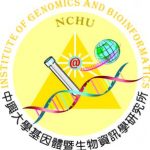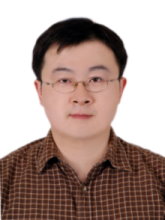Lab: Structural Bioinformatics Lab
Honors:
| Time | Title |
|---|---|
| 2006/07 | “Glycosphingolipid-facilitated membrane insertion and internalization of cobra cardiotoxin: crystal structure of the cardiotoxin/sulfatide complex.” 中央研究院分子生物研究所 學生/助理/博士後申請出席國際學術會議獎助 |
| 2004/10 | “Crystal structure of PriB, a primosomal DNA replication protein of Escherichia coli.” 國家同步輻射研究中心第十屆用戶年會暨研討會 學生口頭報告比賽第二名與壁報比賽佳作 |
| 2004/05 | “Crystal structure of PriB, a primosomal DNA replication protein of Escherichia coli.” 第九屆生物物理新知研討會青年學子壁報論文獎第二名 |
Experience
| Title | Department | Period |
|---|---|---|
| Joint Assistant Professor | Graduate Institute of Biotechnology, NCHU | 2008/08 – now |
| Assistant Professor | Institute of Genomics and Bioinformatics | 2009/02 – now |
| Assistant Professor | Biophysics Society of R.O.C. | 2007/05 – |
| Adjunct Assistant Professor | Graduate Institute of Biotechnology, NCHU | 2007/02 – |
| Joint Assistant Professor | Department of Life Sciences, NCHU | 2007/02 -now |
| Assistant Professor | Biotechnology Center, NCHU | 2008/08 -now |
| Postdoctoral Fellow | Institute of Molecular Biology, Academia Sinica | 2006/01 – 2007/01 |
| Ph.D. | Graduate Institute of Life Science, National Defense Medical Center and Academia Sinica | 2001/08 – 2005/12 |
| M.S. | Institute of Genetics, National Yang Ming University | 1995/09 to 1997/06 |
| B.P. | School of Pharmacy, Taipei Medical College | 1991/09 to 1995/06 |
Professional
| Content |
|---|
|
Speech
| Content |
|---|
|
Lectures
| Course [download course materials] |
|---|
|
| Expertise |
|---|
|
Research
| Lab research [details] |
|---|
|
Research Interests:
My research interests are in the structure and function of a wide range of important biological macromolecules, including: I. Chromatin structure remodeling mechanism in yeast The eukaryotic genome is packaged into chromatin, which can inhibit the accessibility of certain DNA binding factors to their cognate sites in vivo. However, changes in chromatin structure play an important role in processes such as transcription, replication, DNA damage repair, and recombination. Two such ATP-dependent chromatin remodeling complexes in yeast Saccharomyces cerevisiae include the SWI/SNF complex and the RSC complex (Remodels the Structure of Chromatin). Of the two, only RSC is essential for viability, serving an important function in cell cycle progression from G2 to M. RSC is an abundant complex of at least 16 subunits, which was purified on the basis of homology of several of its subunits to those of the SWI/SNF complex.
II. JAK/STAT signaling pathway in fruitfly The signal transduction pathway conducted by JAK (Janus Activated Kinases) and STAT(Signal Transducers and Activators of Transcription) plays a critical role in hematopoiesis and immune response, and mis-regulation of the pathways is associated with a wide range of immunologic diseases and to leukemia in humans. However, the structure/function relationship of the interaction between cytokine receptors, JAKs and STATs still remains largely elusive duo to the lack of structural information. In vertebrates, there are many ligands, receptors, JAKs and STATs making this signaling pathway very complex to be analyzed. By contrast, the JAK/STAT pathway in the fruitfly Drosophila melanogaster is less redundant offering a simpler model to study.
III. The telomere system of the Streptomyces linear plasmid SCP1 Linear plasmids and chromosomes of Streptomyces carry terminal proteins (TPs) covalently attached to the 5′ ends of the DNA. Most known telomeres are conserved in primary sequence and in the potential secondary structures formed during replication. The TP that caps these telomeres is also highly conserved and its coding gene, tpg, is present in most Streptomyces chromosomes and some linear plasmids. However, linear plasmid SCP1 of Streptomyces coelicolor contains atypical telomere sequences and no tpg homologue, and can replicate in the absence of tpg, suggesting that it carries a novel TP gene. A gene on SCP1 (designated tpc) encodes the TP that caps the SCP1 telomeres. The Tpc protein sequence does not resemble the Tpg proteins. A gene (designated tac) upstream of tpc was also required for replication of the SCP1 telomeres. These findings indicate that the Tac-Tpc system of SCP1 represents a novel telomere-capping system of Streptomyces linear replicons. |
Publications
| Journal (*Corresponding author) |
|---|
|
| Conference (*Invited speaker) |
|---|
|


